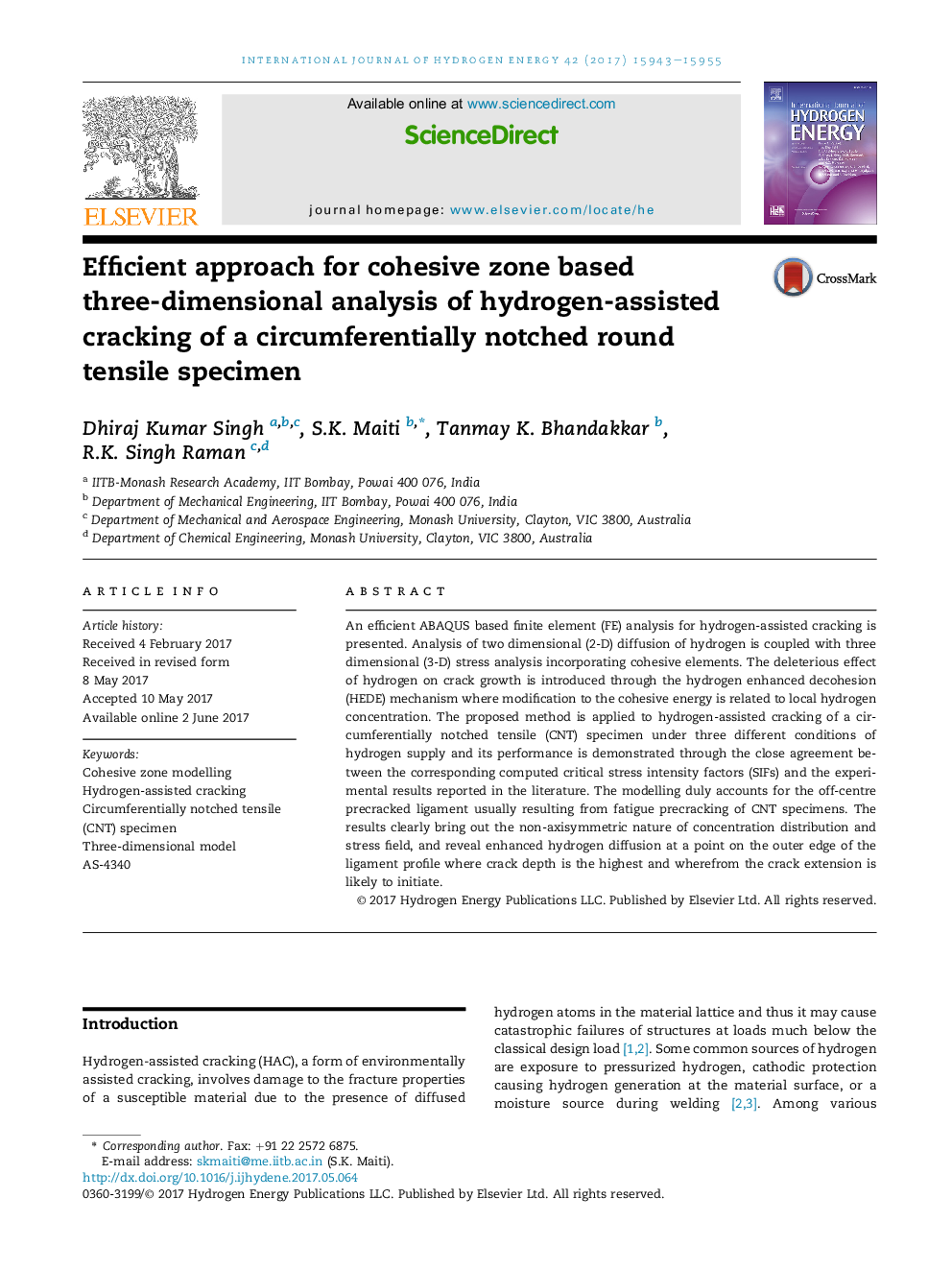| Article ID | Journal | Published Year | Pages | File Type |
|---|---|---|---|---|
| 5146479 | International Journal of Hydrogen Energy | 2017 | 13 Pages |
Abstract
An efficient ABAQUS based finite element (FE) analysis for hydrogen-assisted cracking is presented. Analysis of two dimensional (2-D) diffusion of hydrogen is coupled with three dimensional (3-D) stress analysis incorporating cohesive elements. The deleterious effect of hydrogen on crack growth is introduced through the hydrogen enhanced decohesion (HEDE) mechanism where modification to the cohesive energy is related to local hydrogen concentration. The proposed method is applied to hydrogen-assisted cracking of a circumferentially notched tensile (CNT) specimen under three different conditions of hydrogen supply and its performance is demonstrated through the close agreement between the corresponding computed critical stress intensity factors (SIFs) and the experimental results reported in the literature. The modelling duly accounts for the off-centre precracked ligament usually resulting from fatigue precracking of CNT specimens. The results clearly bring out the non-axisymmetric nature of concentration distribution and stress field, and reveal enhanced hydrogen diffusion at a point on the outer edge of the ligament profile where crack depth is the highest and wherefrom the crack extension is likely to initiate.
Related Topics
Physical Sciences and Engineering
Chemistry
Electrochemistry
Authors
Dhiraj Kumar Singh, S.K. Maiti, Tanmay K. Bhandakkar, R.K. Singh Raman,
